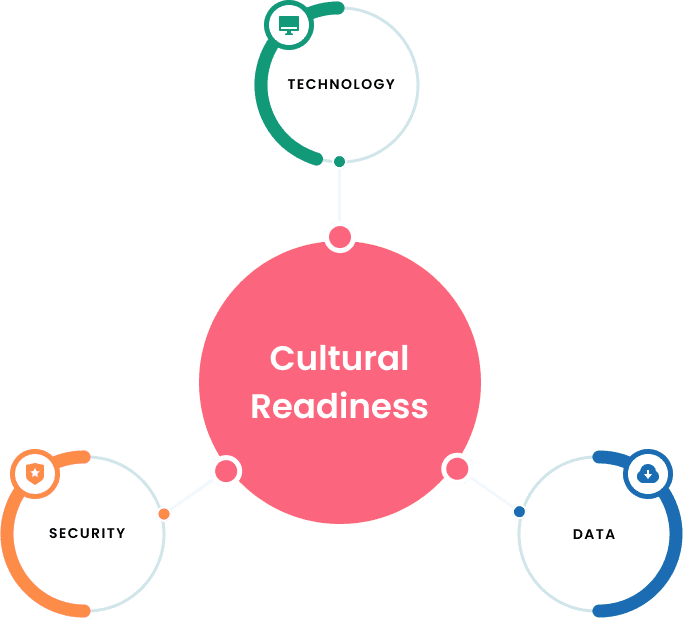Digital Transformation as a cultural shift
We see Digital Transformation as a cultural shift that aligns strategy with people and process to nurture and celebrate a digital culture.
"40 percent of all technology spending will go toward digital transformations, with enterprises spending in excess of $2 trillion through 2019, according to IDC"
Your Digital Transformation journey will be an essential roadmap that should lead your organization towards long term sustainable growth. A clear and concise roadmap that will address your fundamental business model, automate and speed up internal processes, reinforce and improve your channels to market and supply chain and ultimately seek to retain, serve and delight your customers for years to come.
Thinking, planning and building a Digital culture to embrace change is crucial to this success.
Digital Transformation Landscape
Any Digital Transformation program should address your readiness to adapt to new and improved ways of working, assessing key elements:
- Cultural readiness to adapt, is this driven top down?
- How will you address the Human Capital factors to implement change?
- How can Technology enable growth and where is Technology currently holding you back?
- Do you have an ethos of encouraging data-driven decision making and how can this be improved?
- Where are you vulnerable to outside threats and how secure are your core assets?
"44% of organisations do not know where to start"

NobleProg Consulting Services
Digital Transformation consulting practice:
- Roadmap planning and capability assessments.
- Skills gap analysis and digital skills learning pathways.
- Creation of Innovation labs.
- Proof of Concepts and Digital project execution.
Profitability
Customer satisfaction
New Business
New Revenue
We partner with companies at a strategic level to enable digital transformation through a robust change management practice. We bring advanced consulting and implementation experience in the following Digital Transformation services:
- Artificial Intelligence- ML, DL
- Cloud based Services
- Design Thinking
- Robotics (Eg- Robotics Process Automation)
- Cyber Security modelling and testing
- ERP design and implementation
Examples of some of our recent work

Potrzebujesz więcej informacji?
Napisz, zadzwoń lub uzupełnij formularz - wybierz formę kontaktu, która Ci najbardziej odpowiada i zostaw resztę nam. Nasi konsultanci odpowiedzą na Twoje pytania i pomogą dobrać optymalne rozwiązanie.
Bądźmy w kontakcie
